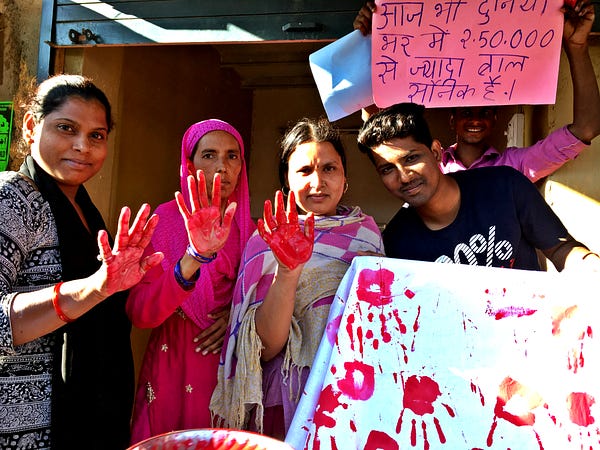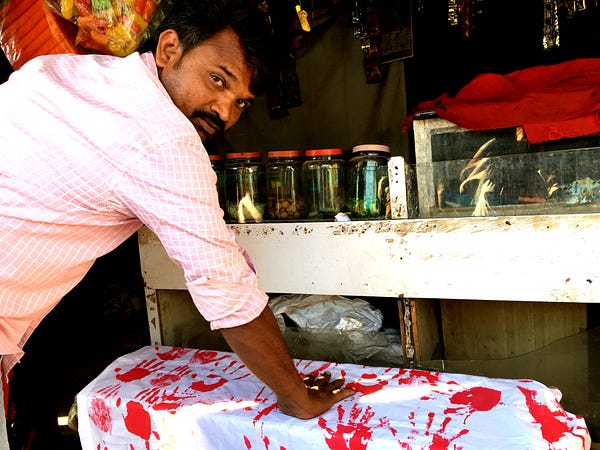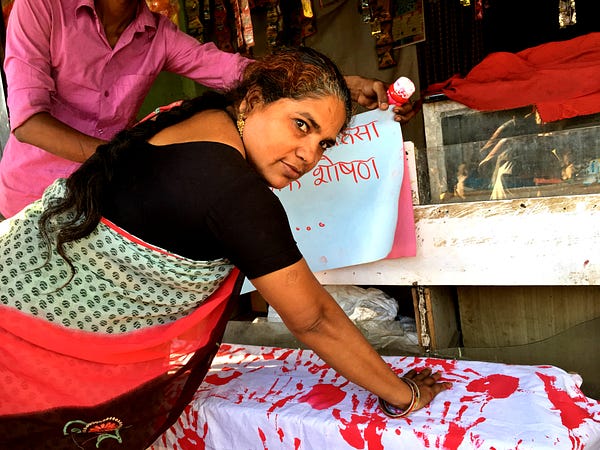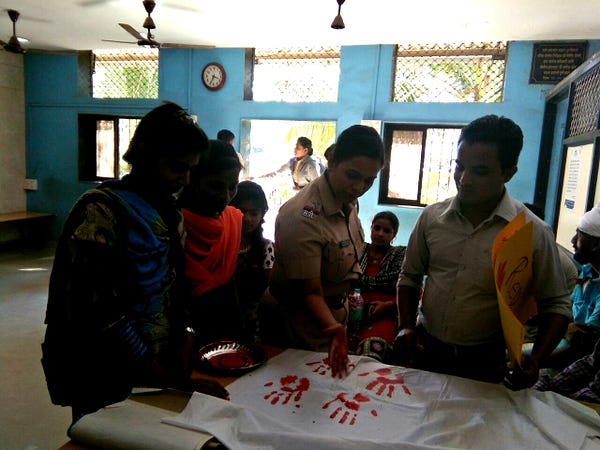
The Global Challenge
Globally, estimates of how many child soldiers are engaged in war and armed conflicts vary widely. It is also feared that the number (in tens of thousands or probably even more than a hundred thousand) may be grossly under-reported. A 2017 UN report on Children and Armed Conflict reports that 56 non-state armed groups and seven state-armed forces of 14 countries are still guilty of recruiting children.
Supporting Red Hand Day in Communities
We condemn the weapons training of children and their use as child soldiers across the world. To show our support for the children in conflict, we observed Red Hand Day or International Day against the Use of Child Soldiers on 12 February 2018 with our community members in Ambujwadi, Malad, Mumbai.
The local children’s group Bal Adhikaar Sangharsh Sangatana (BASS), youth group Malvani Yuva Parishad (MYP) and the adolescent girls group, Nakshatra, worked with us to reach out to the most marginalised areas in the Ambujwadi basti to educate children, youth and community members about the Red Hand Movement.




Here’s how an interaction unfolded between a woman from the Moniya Masjid society and Zarin, an MYP member.
Woman: What is this for? Are the children going to get anything out of it?
Zarin: We are creating a banner with our hand prints as a part of the Red Hand Movement. Many countries in the world still recruit child soldiers for their own vested interests, and we are protesting against this heinous practice with the global community in this way.
Woman: I would look to join in this initiative. Can I also add my hand print?
In the basti there is a school called Zeal English School. We visited the school and conducted an awareness session with the students and the staff. We also visited the local health post and the police station and received support from the officials. The local MLA Aslam Sheikh applauded our efforts and supported the campaign with his hand print.




In this way, 213 red hand prints of the stakeholders upholding child rights, including those of the children, youth, community members and administrative officials were gathered on five white canvas cloths and have been displayed in the community.
Taking Forward the Struggle for Child Rights
While this was a day-long initiative, it certainly doesn’t end here. We will continue to lend our support to the movement against the use of child soldiers with awareness drives, and by participating in discussions that take place on the issue.
Both internationally and at a local level, children are often denied their rights. They are also exposed to a language of violence which has an indelible impact on them. Child soldiers often lack access to education, healthcare services, rehabilitation support and are victims of violence, abuse and exploitation. In the local communities too, child rights violations of different types are found, prominent among them being child labour, physical, emotional and sexual abuse of children, limited access to child health and education avenues.
In a community like Ambujwadi, basic amenities — water, sanitation, education, healthcare are fairly inaccessible, accounting for a high number of malnourished children and youth. As families here struggle to make ends meet and afford two meals a day, many children are employed in child labour and are unable to complete their school education. Children also take to addiction and gambling, and become vulnerable to abuse. All of these factors scar their formative years and limit their opportunities for healthy growth and development.
The Red Hand Movement, therefore, while being a protest against the use of child soldiers, also symbolises for us the larger fight against the violation of child rights the world over. This includes safeguarding the right to basic survival, development, protection and effective participation of children, as per the United Nations Convention on the Rights of the Child. We are constantly working to create nurturing, conducive, resilient communities and sustainable environments to guarantee the fulfillment of child rights in every context.
Alicia Tauro
Project Associate


